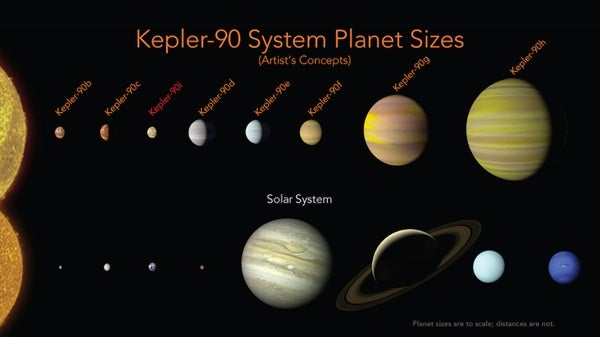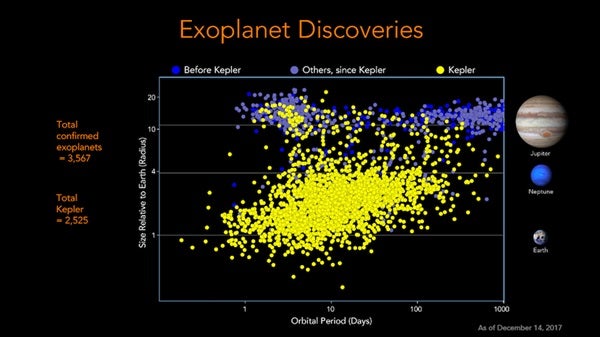In a joint teleconference today, NASA and Google announced the recent discovery of an eighth planet orbiting the Sun-like star Kepler-90, located some 2,500 light-years from Earth. The newly discovered exoplanet, named Kepler-90i, is a rocky world with a surface temperature of roughly 800°F (426°C) that zooms around its host star once every 14.4 days.
The discovery of Kepler-90i (as well as the discovery of another exoplanet known as Kepler-80g) was made using the first neural network — developed by Google — designed to analyze archival data from the Kepler Space Telescope.
“A neural network is a machine learning algorithm that is very loosely inspired by the human brain,” said Christopher Shallue, senior software engineer at Google AI and co-author of the study. During a teleconference, he explained that the algorithm takes sample inputs, learns to identify patterns in the data, and then uses those patterns to make future identifications.
Before the new neural network could analyze the Kepler data, researchers had to first train it to spot transiting exoplanets from Kepler’s light curves. Light curves show how the brightness of a star drops off when an orbiting planet passes in front of it.
Using 15,000 previously confirmed exoplanet signals as flash cards, the neural network “learned” to correctly identify true planets. After the neural network knew what patterns it was looking for, the researchers turned it loose on 670 of Kepler’s weaker signals. In these weak signals, the AI found two likely exoplanets — Kepler-90i and Kepler-80g. The researchers pointed out the probability that the exoplanet detections were false positives is only 1 in 10,000.
“Just as we expected, there are exciting discoveries lurking in our archived Kepler data, waiting for the right tool or technology to unearth them,” said Paul Hertz, Astrophysics Division director at NASA, in a press release. “This finding shows that our data will be a treasure trove available to innovative researchers for years to come.
The researchers’ findings have been accepted for publication in The Astronomical Journal. The team will also be publicly releasing the neural network’s code and training model for anyone who would like to run their own analysis of the Kepler data.











